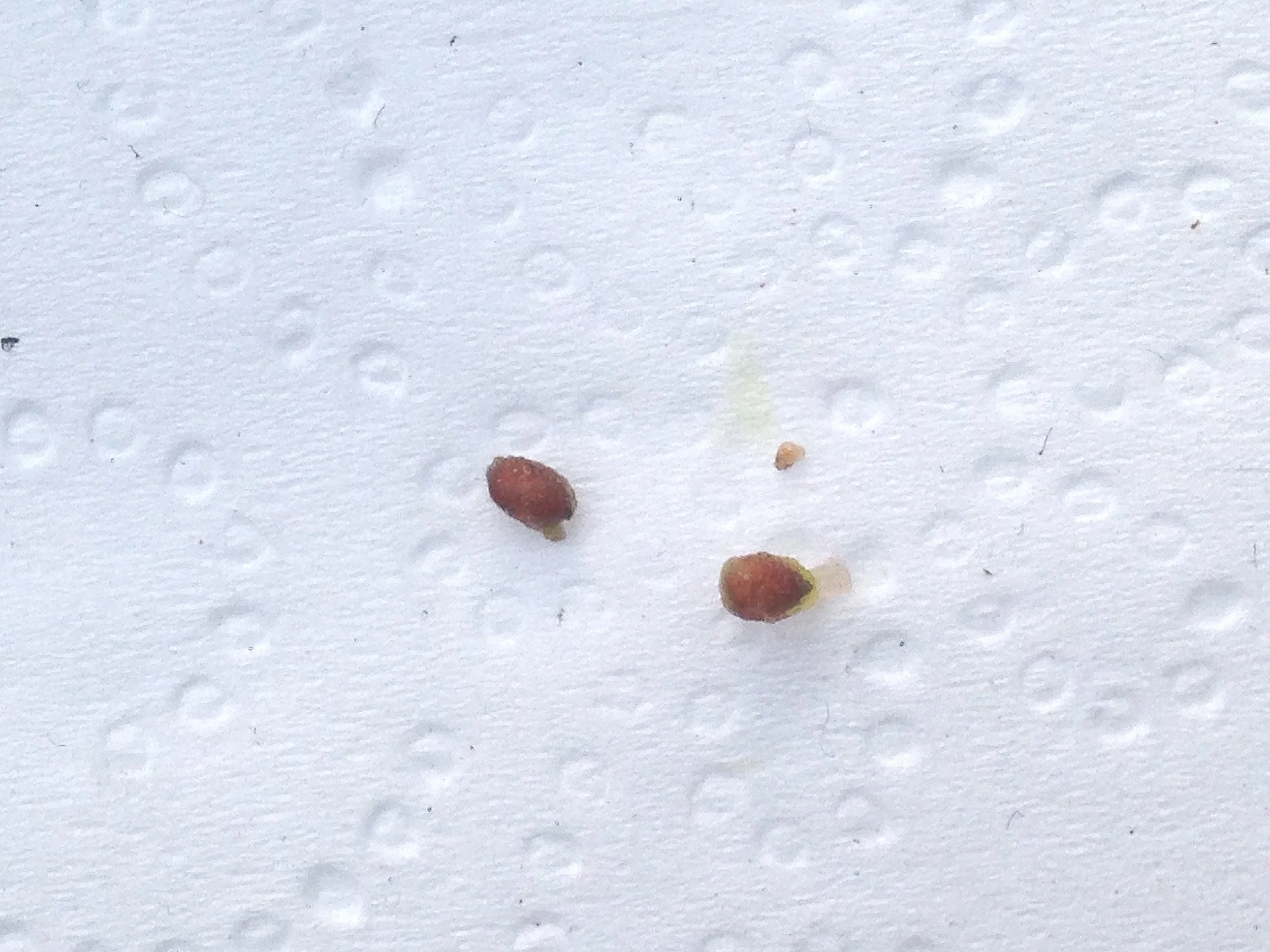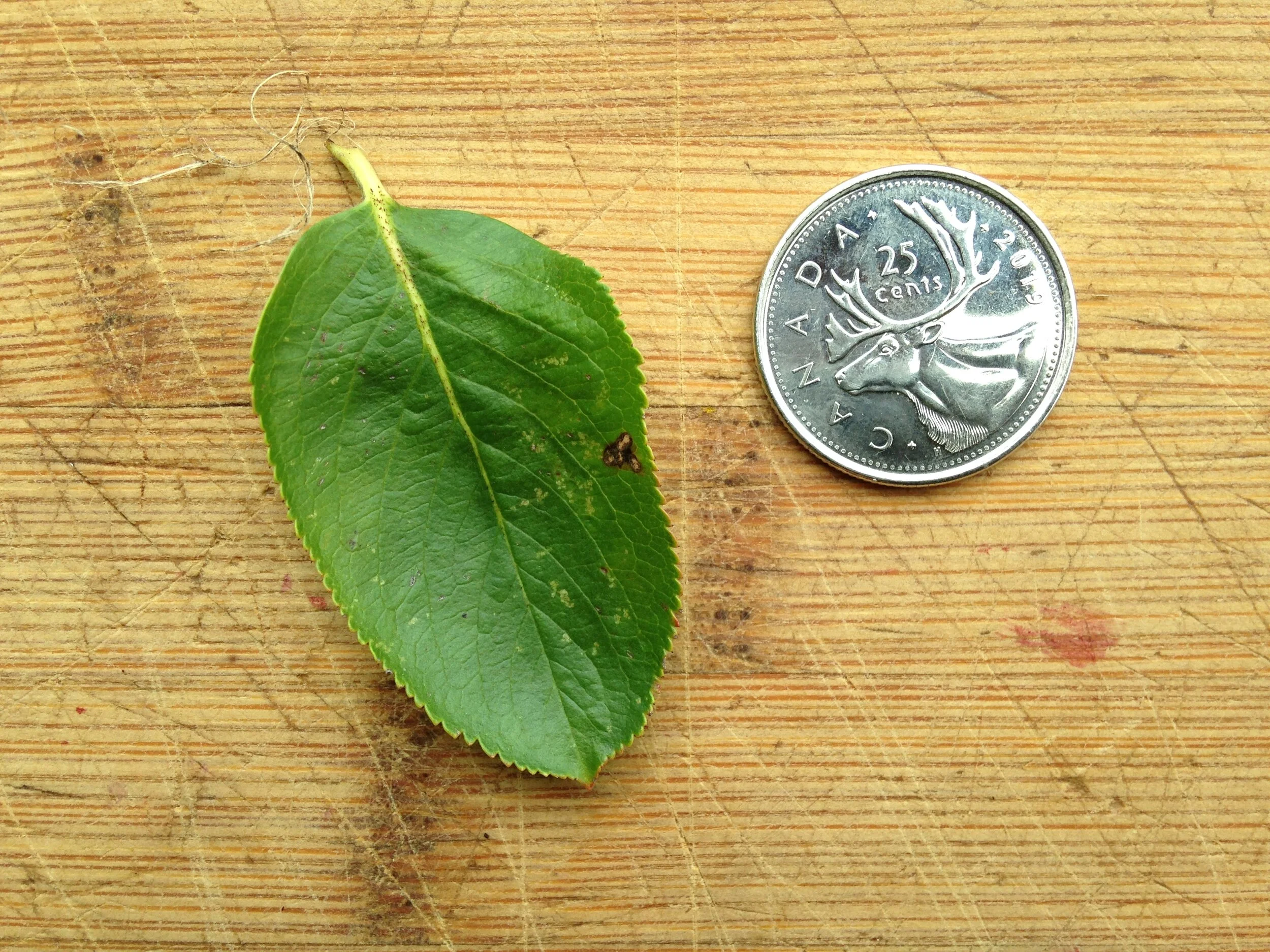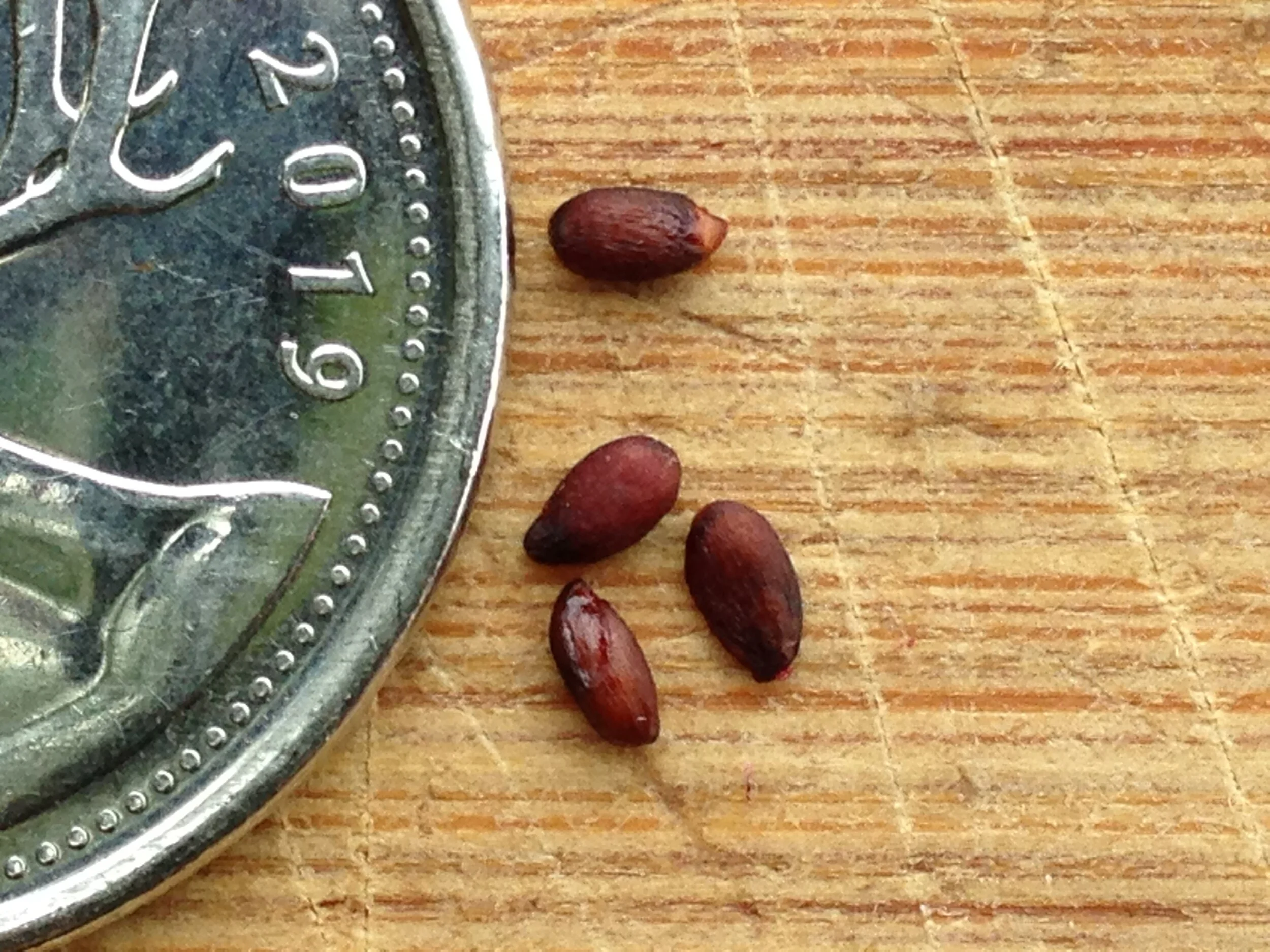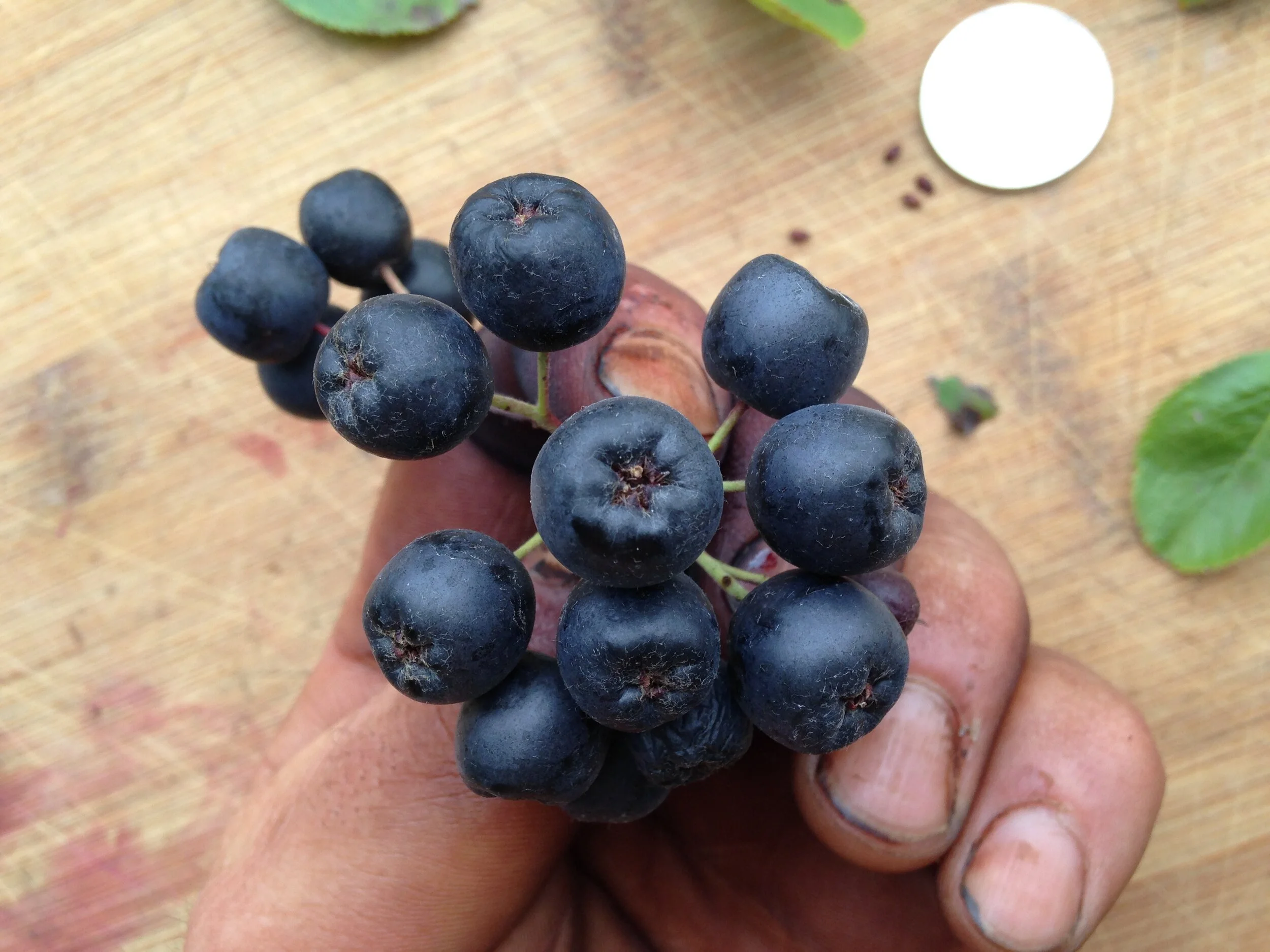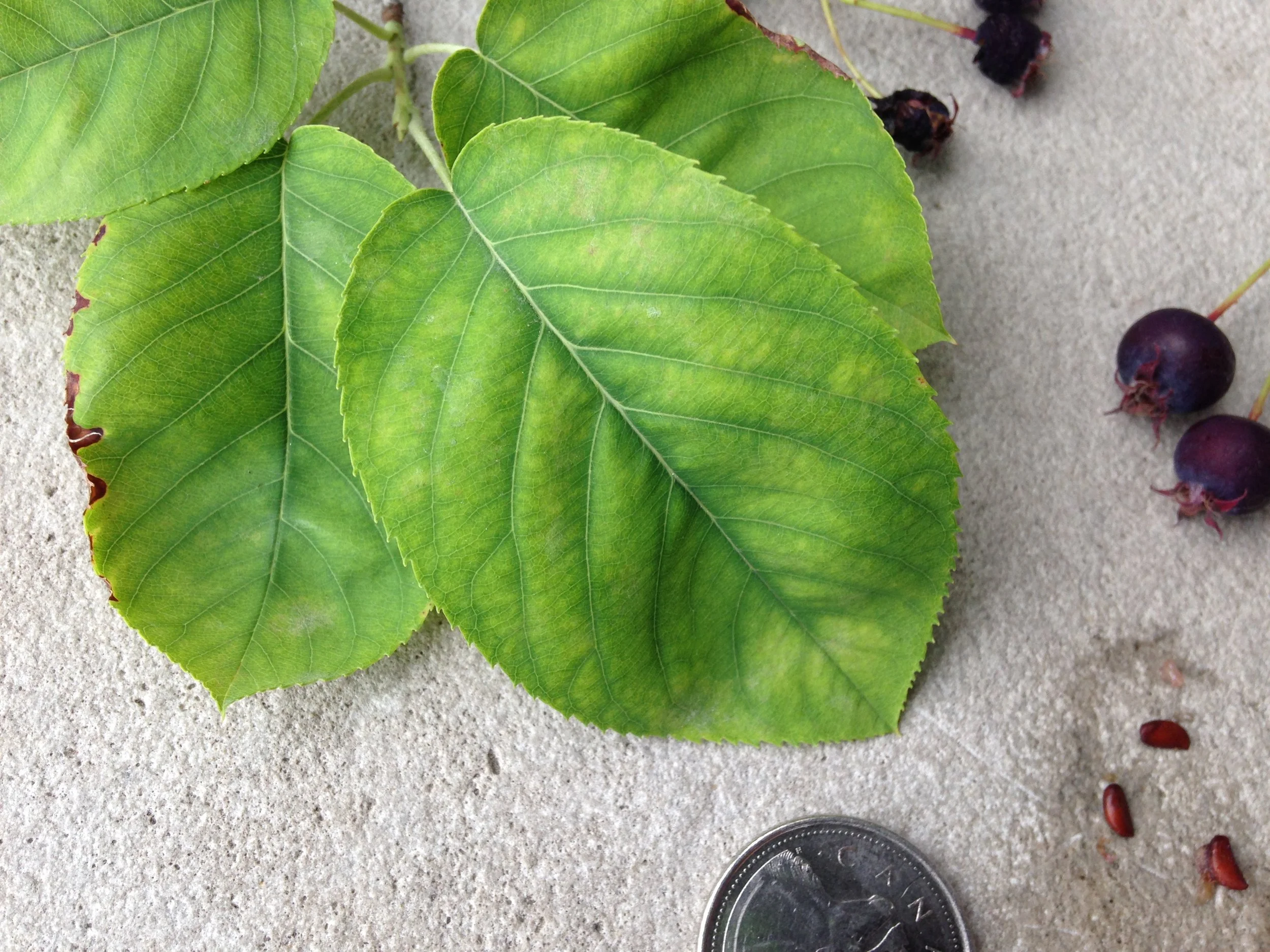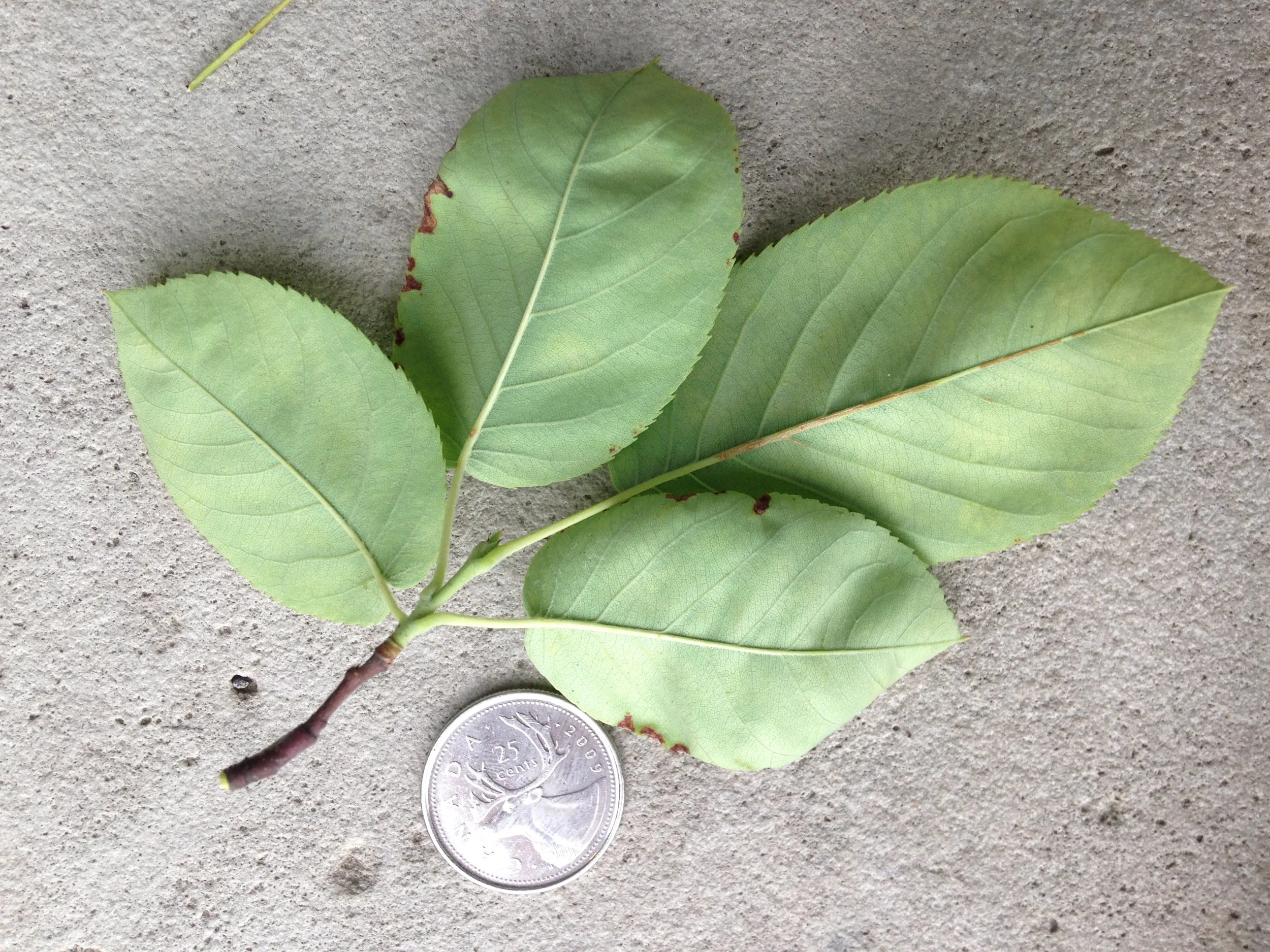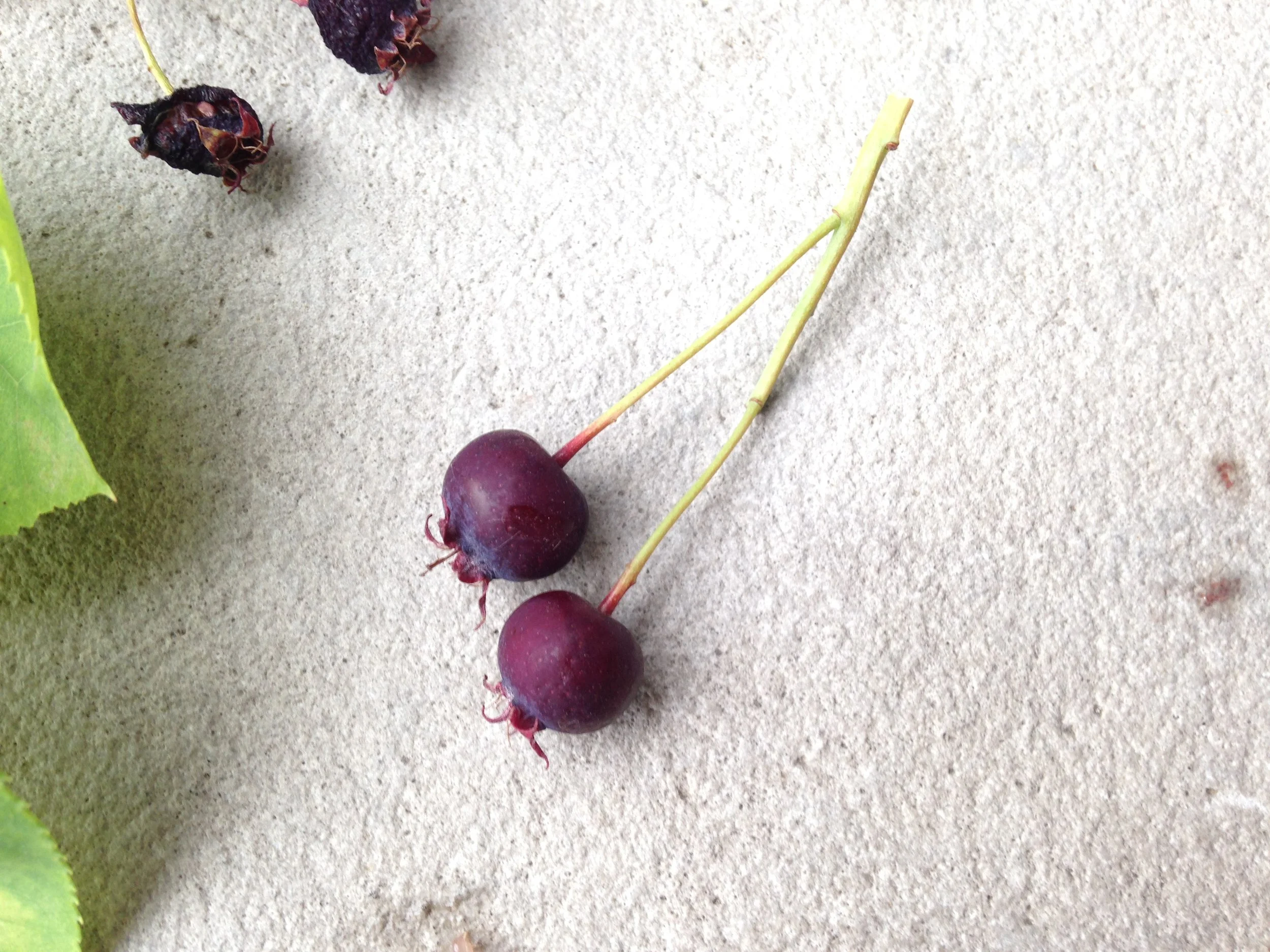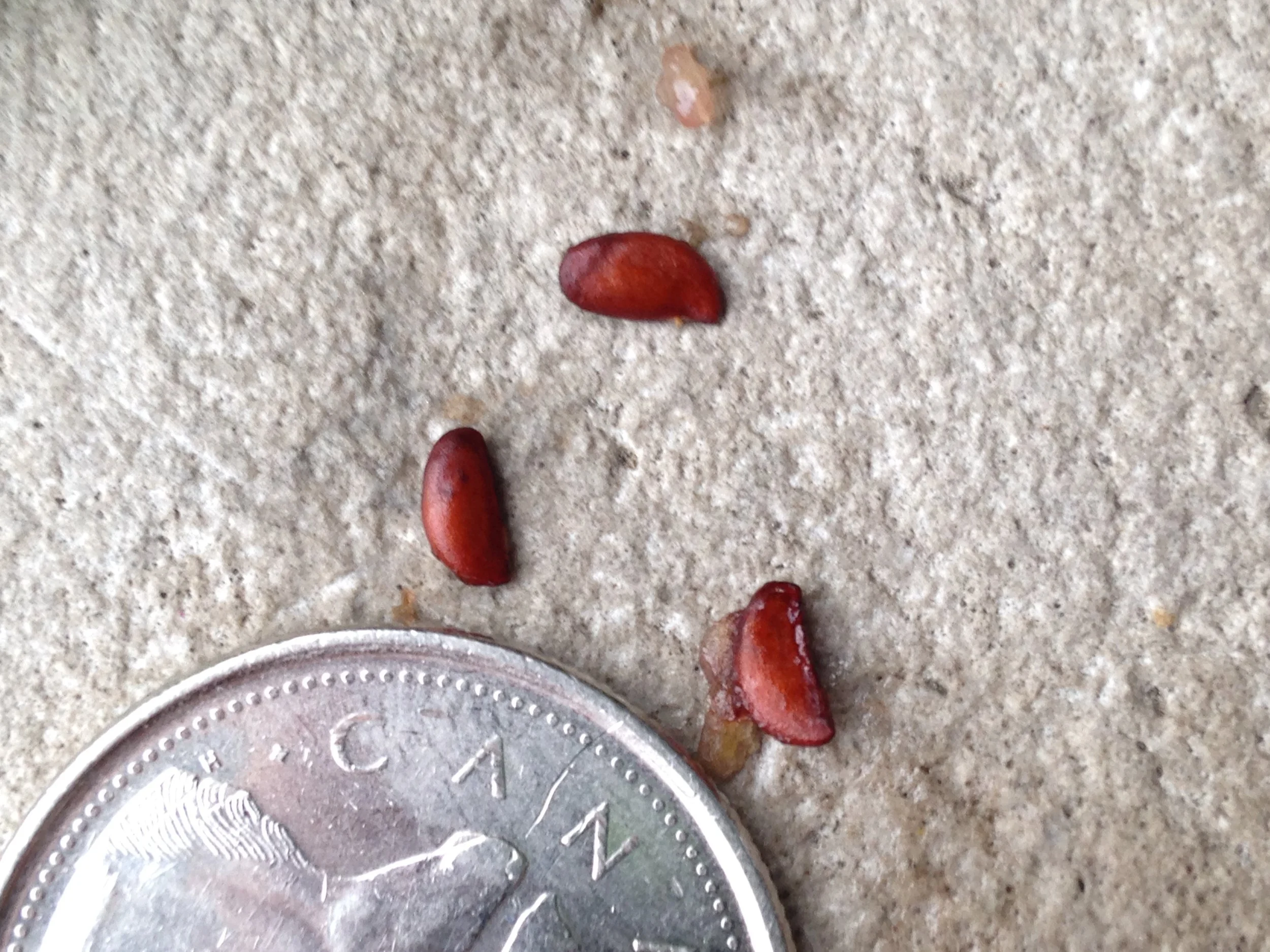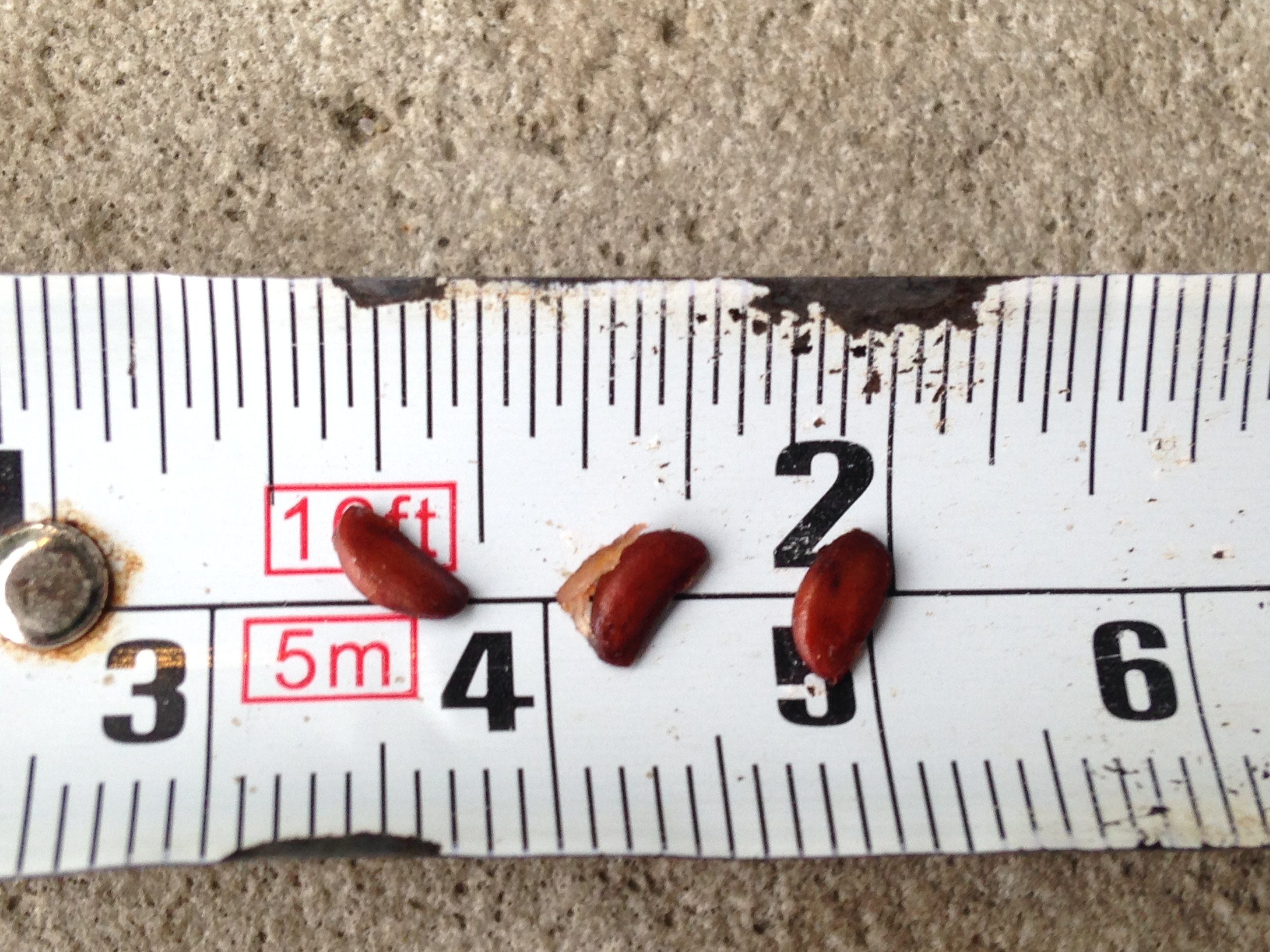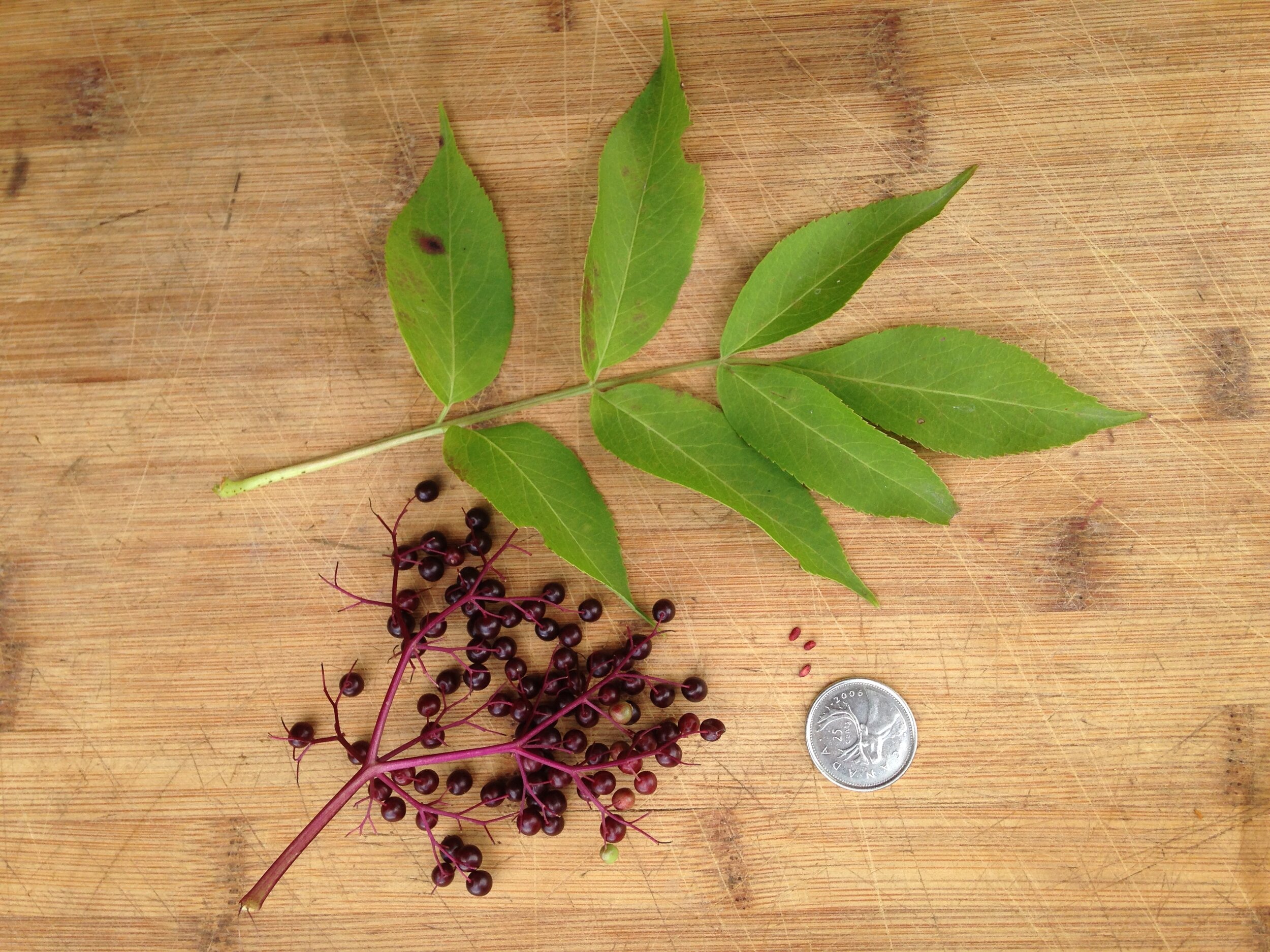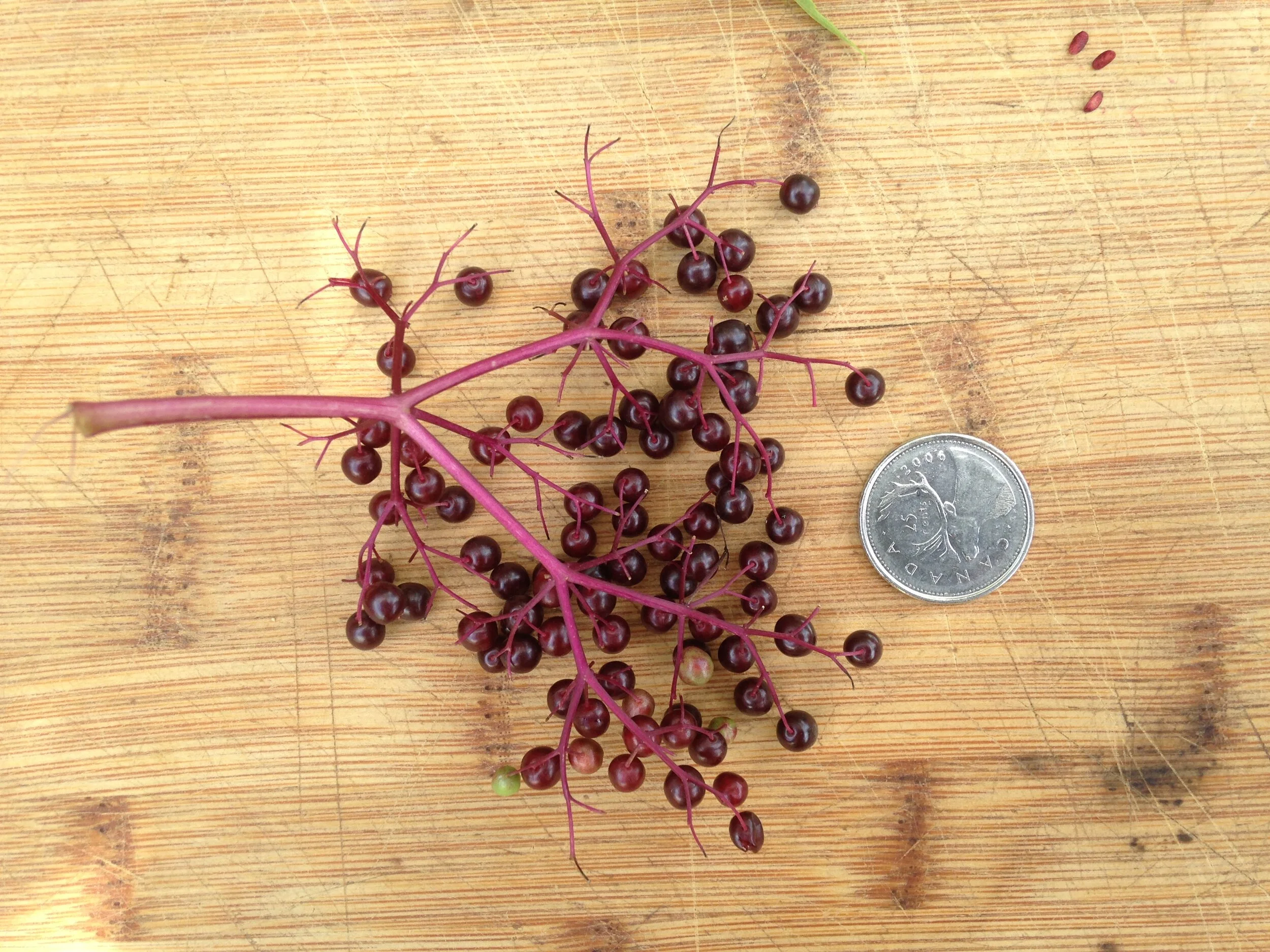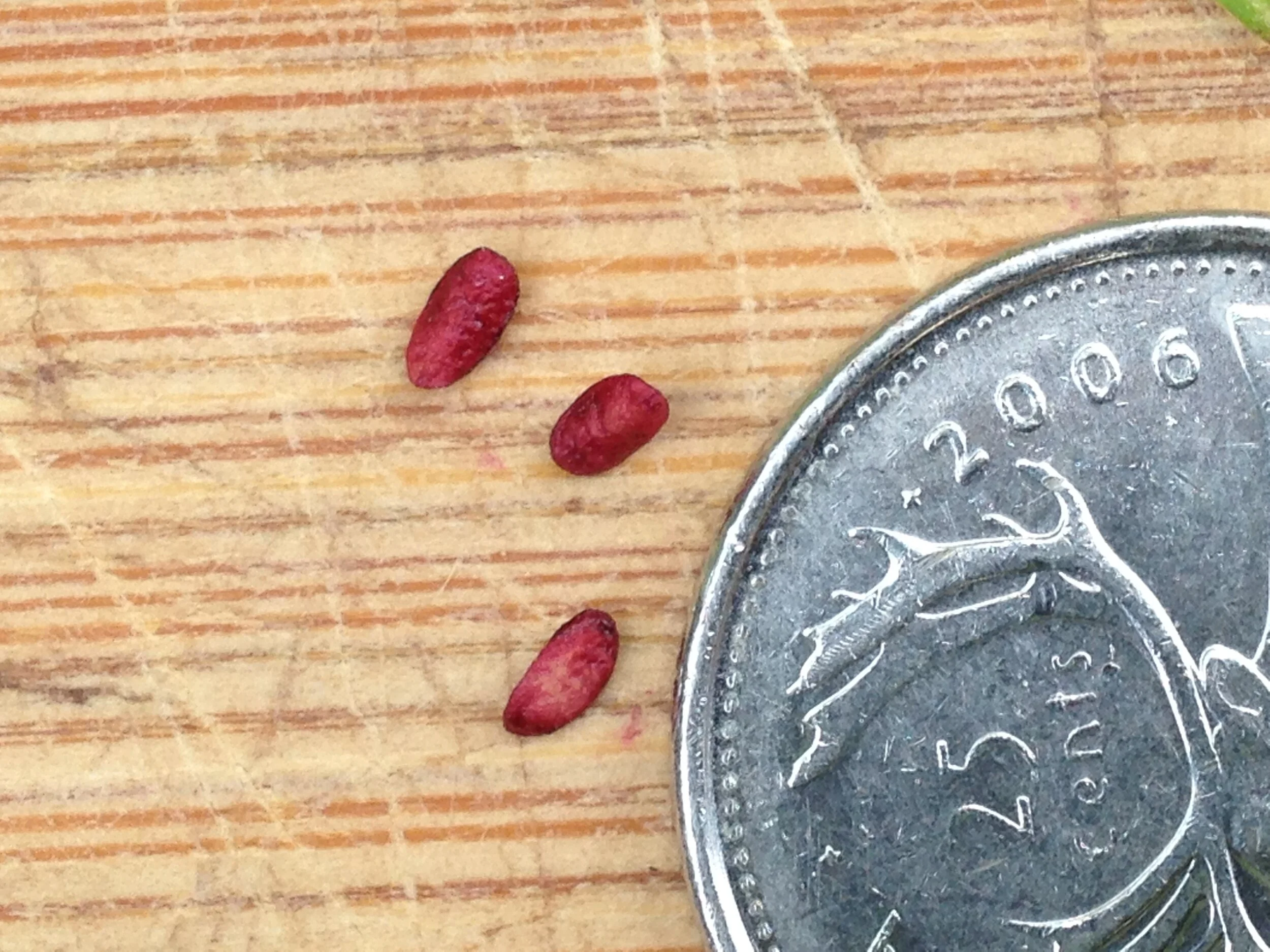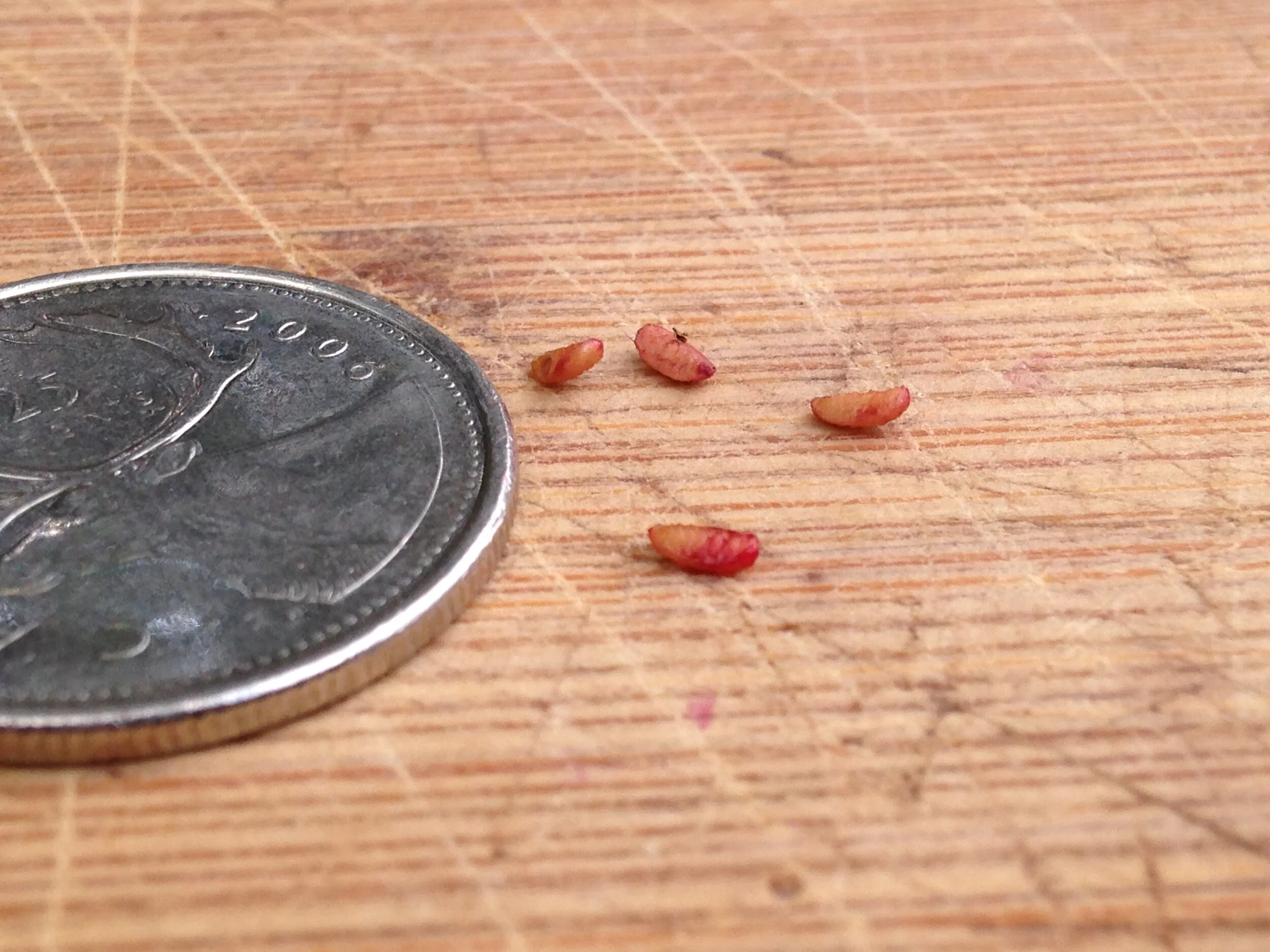Fruit and Seeds pt. 5
Finally, part 5. This entry has been quite delayed, just under a year in fact. I took new photos for the Black Currant (Ribes nigrum) and got some photos and filled out the entry for the Serviceberry (Amelanchier spp.). The common scale still remains a canadian quarter, which is 23.88 mm.
What a fun project, all inspired by an encounter with an Eastern Chipmunk (Tamias striatus) with some then unknown seeds I noticed in their scat.
Black Currant, Cassis (Ribes nigrum)
Habitat of plant : Backyards and intentional plantings. Escapees found along roadsides and in thickets. Prefer loamy soils.
When is fruit ripe : July - August
Size of seed : 2.5 - 3 mm long
General description of seed : Small pale oval, with pointed end.
Notes : 3 - 12 seeds found per fruit.
Aronia, Chokeberry (Aronia melanocarpa)
Habitat of plant : Swamps, wet woodlands, bogs, also dryer sandy slopes and old fields.
When is fruit ripe : August - October, and sometimes fruit will persist through shriveled on the shrub.
Size of seed : ~ 3 mm L x 1.5 mm W
General description of seed : Small, longer than wide, reminiscent of an tiny Almond. Rounded at one end, pointed at the other.
Notes : Up to 30 seeds per fruit
Saskatoonberry, Serviceberry, Juneberry, Shadbush, (Amelanchier spp.)
Habitat of plant : Forest understory, forest edges, sand plains, rocky cliffs, fencerows, municipal plantings.
When is fruit ripe : Late June-July.
Size of seed : 4 - 4.3 mm.
General description of seed : Dark, quarter Moon shaped, with rounded edges, sometimes with a slight and faint hookish quality.
Notes : Each contains 2-5 seeds.
Elderberry (Sambucus canadensis)
Habitat of plant : Low ground, swamps, thickets. Sunny riparian edges, edges of woodlands, roadside ditches.
When is fruit ripe : Late August - September.
Size of seed : 3 mm L x 1.5 mm W.
General description of seed : Small many bumpy ridges. Rounded along the length on the dorsal side of the seed, coming to a point at the terminus. Ventral side wedge shaped, or concave depending on specimen.
Notes : Final microscopic images taken of seed collected from a different plant in 2020.
If you want to see all of the previous entries check out the links below:
Part 1 : Glossy Buckthorn (Rhamnus frangula), Tartarian Honeysuckle (Lonicera tartarica), Staghorn Sumac (Rhus typhina), Red Raspberry (Rubus idaeus var.)
Part 2 : Chokecherry (Prunus virginiana), Red-Osier Dogwood (Cornus sericea), Alternate-leaved Dogwood (Cornus alternafolia), Common Buckthorn (Rhamnus cathartica)
Part 3 : Grape (Vitis spp.), Swamp (Silky) Dogwood (Cornus obliqua), Starry False Solomon’s Seal (Maianthemum stellatum), Nannyberry (Vibernum lentago)
Part 4 : Spikenard (Aralia racemosa), Bittersweet Nightshade (Solanum dulcamara), Hawthorn (Crataegus spp.), Virginia Creeper (Parthenocissus vitaceae)
Part 5 : Black Currant (Ribes nigrum), Chokeberry (Aronia melanocarpa), Serviceberry (Amelanchier spp.), Elderberry (Sambucus canadensis)
And as a bit of a post script to my future self, here are some useful links for seed identification:






